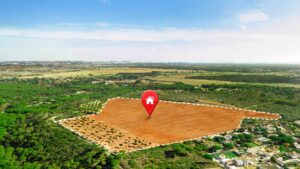1. Introduction: The Growing Appeal of Land Development

Land development is rapidly gaining traction as a cornerstone of real estate investment. Investors are drawn to its potential for high returns and its role in shaping modern communities.
The process transforms raw land into valuable assets, such as residential neighborhoods, commercial hubs, or mixed-use developments. This creates opportunities for profit and fosters economic growth.
The appeal lies in the flexibility land development offers. From small-scale projects to large urban expansions, the possibilities are endless.
In this blog, we explore the fundamentals of land development, why it’s so profitable, and the trends making it a game-changer in real estate.
2. What is land development?

A. Breaking Down the Basics
Land development involves converting raw or underutilized land into a state that meets specific purposes, such as residential, commercial, or industrial use. This process typically includes steps like acquiring land, securing necessary permits, & implementing construction or infrastructure improvements.
The aim is to increase the land’s value while aligning with community needs and zoning regulations.
B. Types of Land Development Projects
Land development projects vary widely. Common types include residential subdivisions, retail complexes, industrial parks, and recreational areas. Mixed-use developments combining residential and commercial spaces are becoming particularly popular for their convenience and functionality.
These projects cater to diverse demands, offering flexibility for developers and investors alike.
3. Why is land development profitable?

A. High ROI Opportunities
Land development often delivers high returns on investment (ROI). The process of transforming raw land into a usable state significantly boosts its market value.
For example, converting farmland into a residential community can yield substantial profits. Investors can benefit from appreciation, rental income, or direct sales of the developed property.
B. Demand for Developed Land
The demand for developed land continues to rise. Rapid urbanization and population growth fuel the need for housing, commercial spaces, and infrastructure. Developers who identify prime locations can capitalize on this trend, ensuring consistent demand for their projects.
4. Trends Shaping Land Development

A. Sustainability and Green Development
Sustainable practices are transforming the land development industry. Developers are prioritizing eco-friendly designs, renewable energy sources, and efficient resource management. These trends meet consumer demands for greener living and align with global environmental goals.
B. Urban Expansion and Smart Cities
Urban expansion is a key driver of land development. Smart cities, integrating technology and infrastructure, represent the future of urban living. Projects incorporating advanced tech, such as IoT systems, attract forward-thinking investors & tenants.
5. How to Start with Land Development?

A. Research and Planning
Thorough research is essential. This includes analyzing market trends, zoning laws, & financial feasibility. A well-crafted plan sets the foundation for a successful project.
B. Building Partnerships
Strong partnerships with architects, contractors, & local authorities are crucial. Collaboration ensures smoother project execution and compliance with regulations.
6. Conclusion: The Future of Real Estate Investments

Land development offers immense potential for those looking to invest in real estate. With rising demand, sustainable trends, and advanced technology, the sector is poised for growth.
Whether you’re a seasoned investor or exploring new opportunities, land development stands out as a profitable and impactful avenue for investment.


